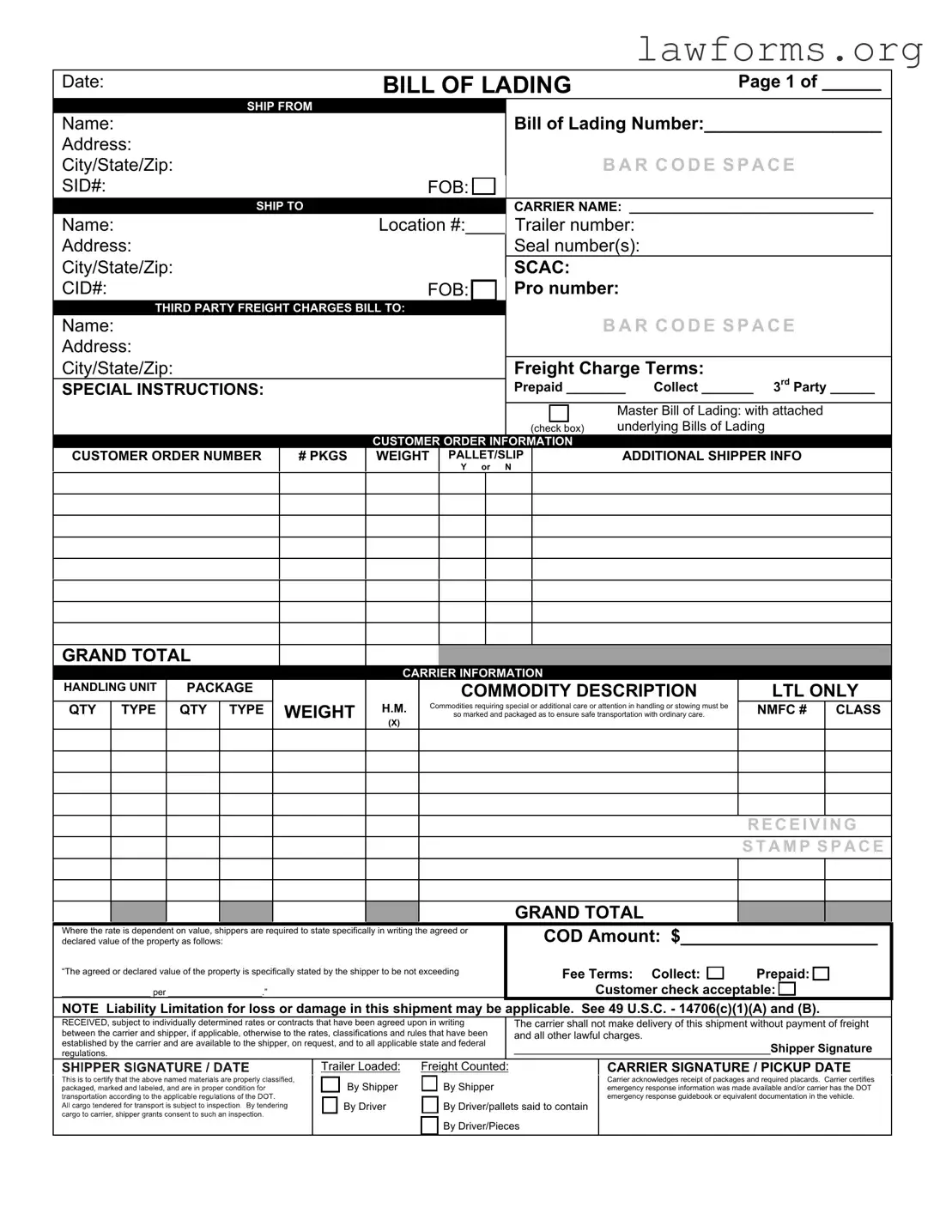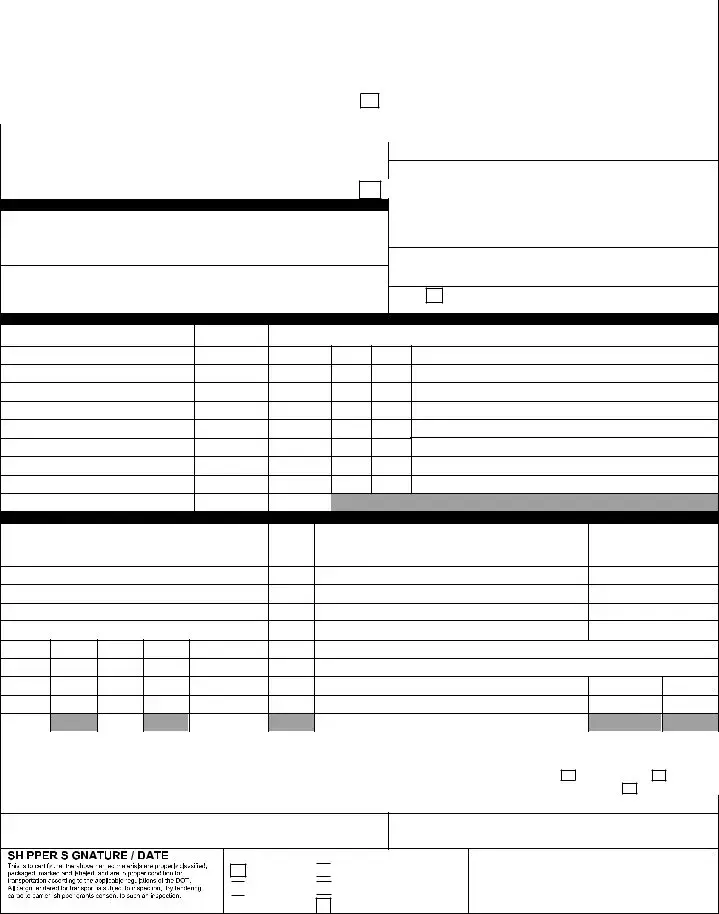Fill Out a Valid Bill of Lading with a Supplement Template
The Bill of Lading with a Supplement form is a crucial document in the shipping industry, serving as a receipt for goods and a contract between the shipper and carrier. This form outlines the terms of transportation and provides additional details that may not be included in the standard bill of lading. For those looking to streamline their shipping process, filling out this form is essential; click the button below to get started.
Customize Document Online


 to certify that the above named materials are properly classified, packaged, marked and labeled, and are in
to certify that the above named materials are properly classified, packaged, marked and labeled, and are in proper condition for transportation according to the applicable regulations of the DOT.
proper condition for transportation according to the applicable regulations of the DOT.
 By Shipper
By Shipper
 By Driver
By Driver 
 By Driver/pallets said to contain
By Driver/pallets said to contain